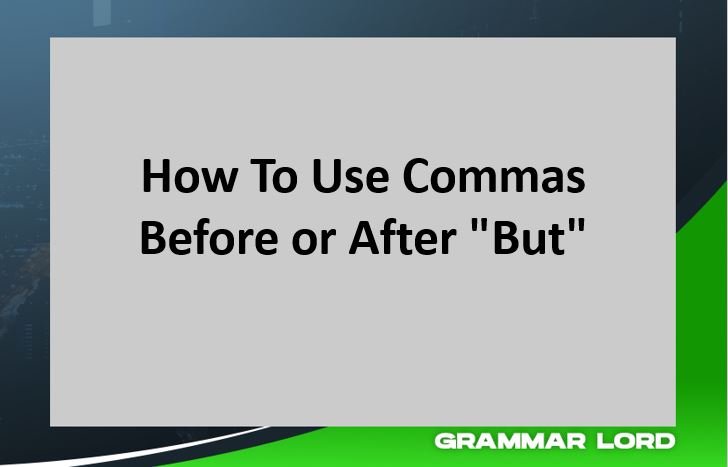So, you’ve been wondering which is correct between putting a comma before or after “But”? Don’t worry, even most seasoned grammarians do. But, this article will untangle the mystery and put those commas in their right places.
Contents
Let’s break down the battlefield.
Imagine “but” as a little bridge – sometimes it connects two complete islands of thought (independent clauses), and sometimes it leads to a smaller landmass just hanging off the main one (a dependent clause). This is what determines whether or not to use a comma before or after “but”.
READ ALSO: Exploring the Contrasts Between Invoke and Evoke
Here’s the right time to use commas Before “But”
When “but” joins two independent clauses, it’s time to use it before “but”! Think of it like pausing briefly to acknowledge the shift in direction.
For example:
“I woke up excited for the beach, but the sky wept gray tears.”
“He practiced for weeks, but nerves stole his voice on stage.”
Each part could stand alone as a sentence, so the comma marks that pause before the “but” turn.
Here’s when to use commas on both sides
Sometimes, a sneaky little word or phrase called an “interrupter” comes in after “but.” This interrupter adds emphasis or clarifies the tone, like a dramatic flourish.
And guess what? It gets its comma, both before and after. Like this:
“He won the race, but honestly, I’m surprised.” (That “honestly” needs its spotlight.)
“The cake looked delicious, but alas, I’m on a diet.” (“Alas” deserves its dramatic pause.)
READ ALSO: 8 Creative Ways To Say “Special Thanks”
Here’s when no comma is needed
Now, if “but” introduces a dependent clause, it’s like venturing onto a tiny islet attached to the bigger one. No need for a comma the main island holds everything together.
For instance:
“I love pizza but pineapple as a topping is a crime.”
“She dreamed of Paris but her passport lay gathering dust.”
The first part, with the verb and subject, holds the meaning, and the “but” clause just adds a little spice. No break is needed!
Remember:
Independent clauses need a comma before “but.” Non-clause companions don’t need a comma before “but.”
Interrupters need commas on both sides of “but.” The more you practice, the more you master it.
READ ALSO: Exploring the Difference Between Who’s and Whose
Final Thoughts
And yes! No more staring at your screen, brow furrowed, wondering if you’ve committed punctuation purgatory. The puzzle of the comma before or after “but” is unraveled.
The key is to understand what kind of companions “but” is hanging out with. Are they independent heroes, trusty sidekicks, or bold interrupters? Once you figure that out, the comma decision becomes a breeze.

